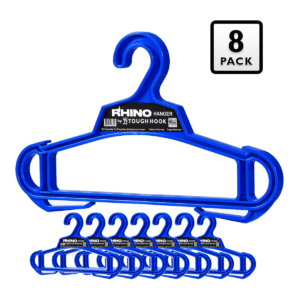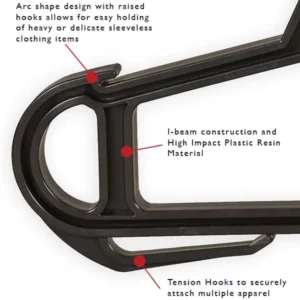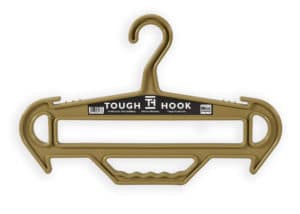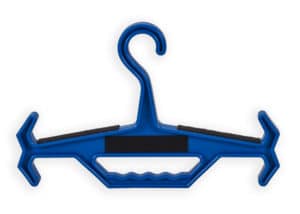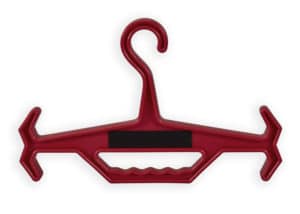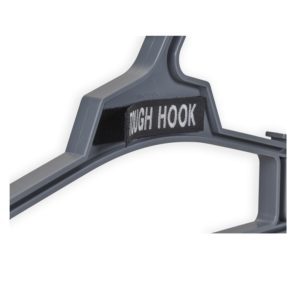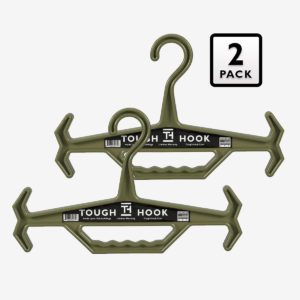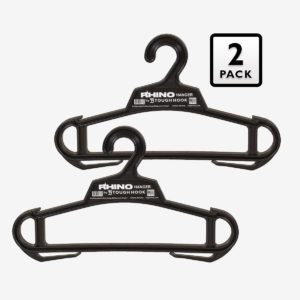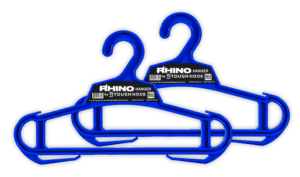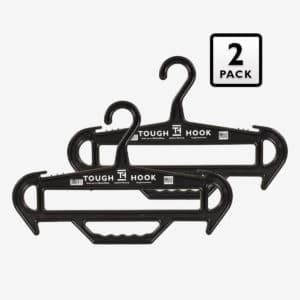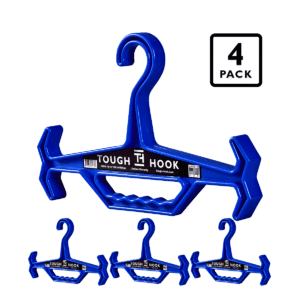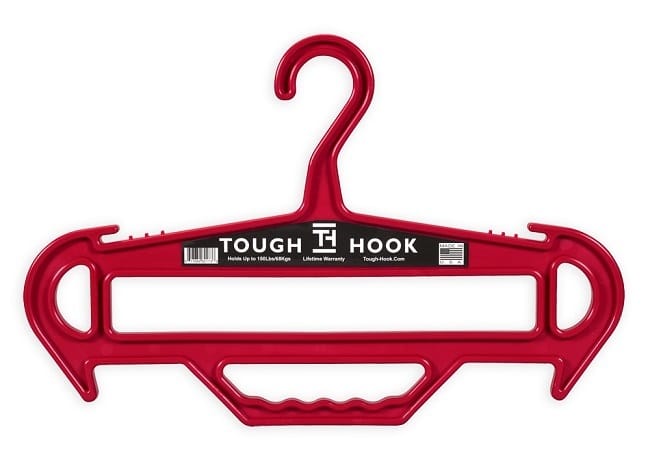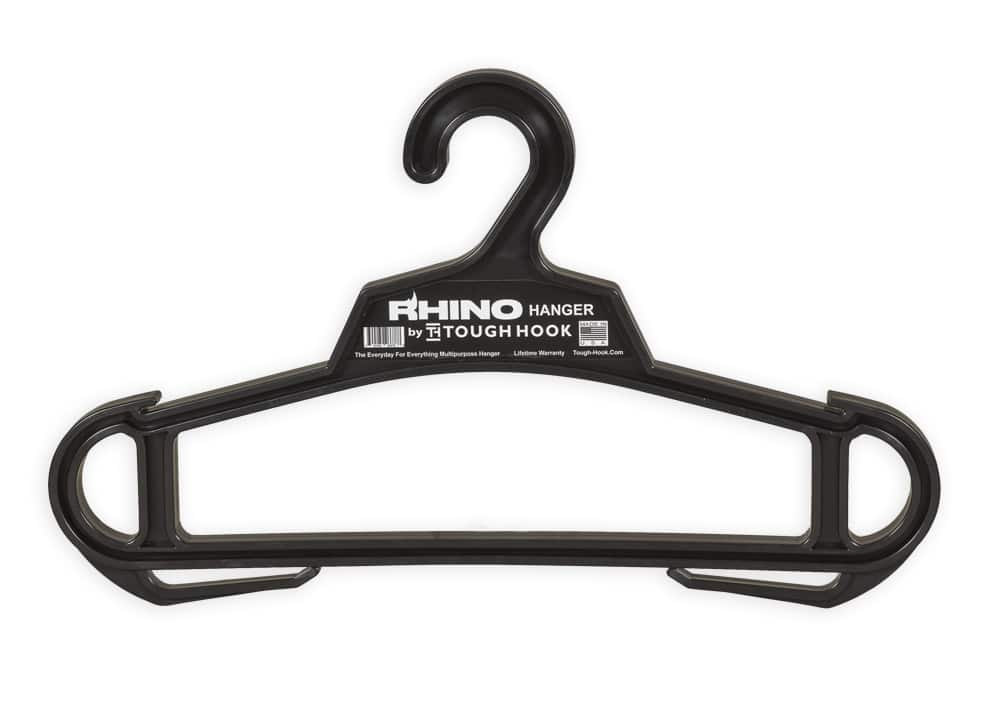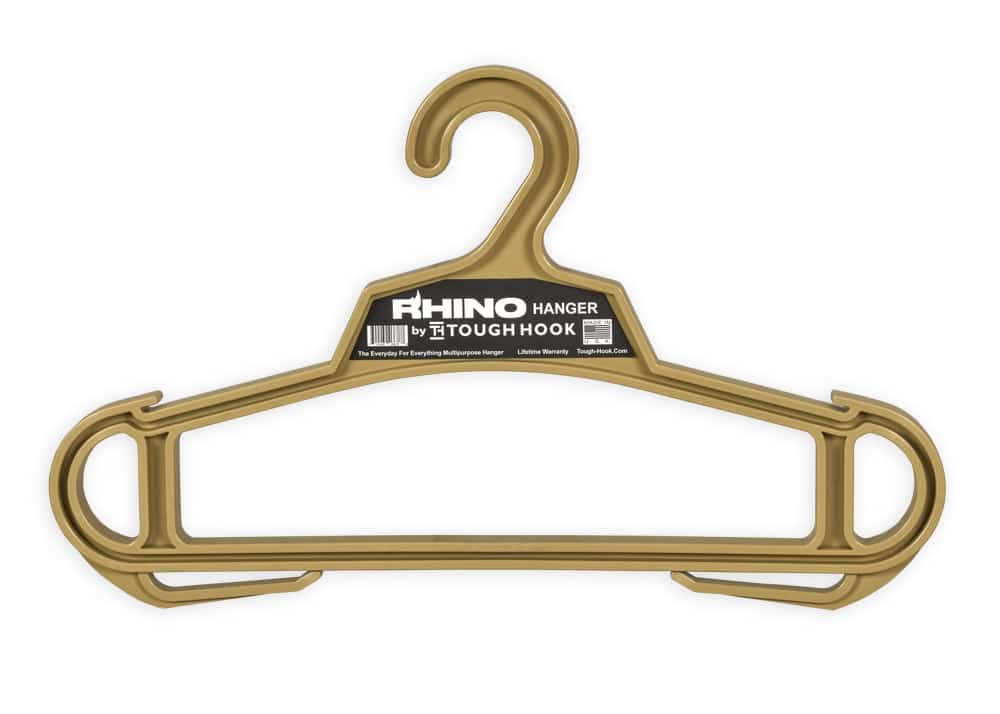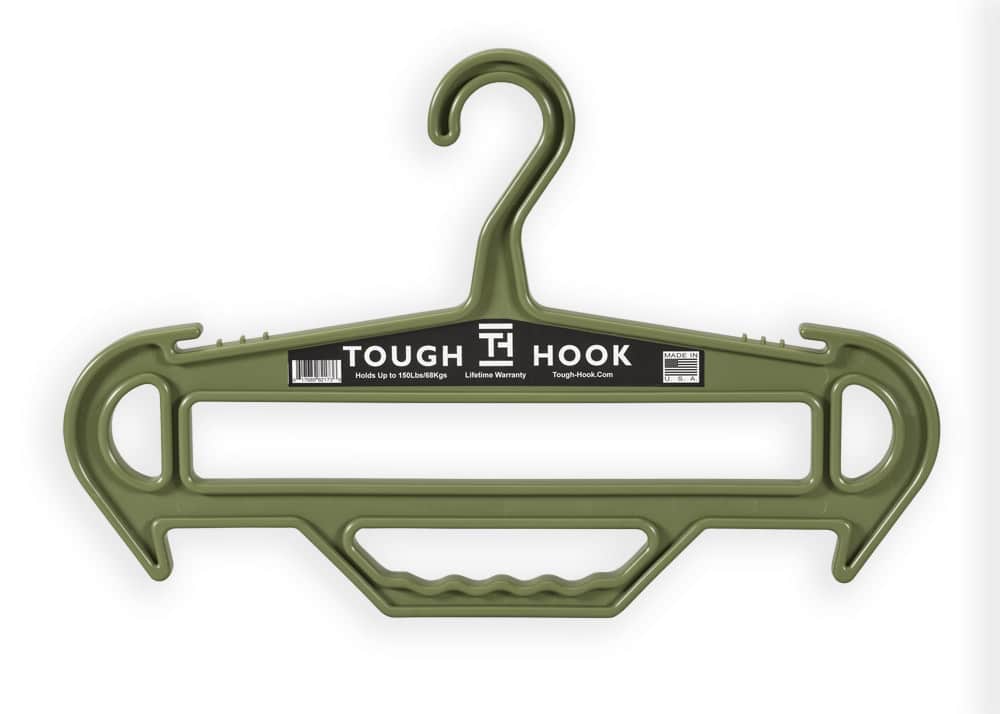The thrill of catching that perfect wave is often followed by the less glamorous but crucial task of wetsuit care. For surfers, divers, and open-water swimmers, a wetsuit is more than just neoprene; it’s an investment, a shield against the cold, and a vital piece of performance gear. Proper storage isn’t just a suggestion; it’s the definitive way to extend your wetsuit’s life, maintain its flexibility, and ensure it’s ready for your next aquatic adventure. Cutting corners on storage can lead to nasty odors, brittle neoprene, and premature cracking, forcing you to shell out for a replacement much sooner than you should.
This comprehensive guide breaks down the expert-approved methodology for storing your wetsuit—a simple, three-step ritual: Rinse, Rest, Repeat. By following these steps and utilizing the right gear, you’ll be giving your wetsuit the respectful treatment it deserves.

2 Pack RHINO Heavy Duty Clothes Hanger Bundle
Original price was: $25.95.$23.95Current price is: $23.95.Step 1: Rinse – The Immediate Aftercare
The moment you peel off your wetsuit, its clock starts ticking. Salt, chlorine, sand, and sweat immediately begin their corrosive work, breaking down the synthetic fibers and rubber. Your first and most critical action is to neutralize these elements with a thorough rinse.
The Rinsing Protocol:
-
Use Cool, Fresh Water: Never use hot water, as heat is neoprene’s arch-nemesis. Hot water can compromise the glue in the seams and the integrity of the material itself. A cool, gentle stream from a hose or shower is all you need.
-
Rinse Inside and Out: Turn the wetsuit inside out first. This is where most of the sweat and body oils reside. Give it a good rinse until the water runs clear. Then, flip it right-side out and rinse the exterior to remove all traces of salt, sand, or pool chemicals.
-
The Gentle Cleanser (When Necessary): Most of the time, fresh water is sufficient. However, if your suit is particularly funky or if you’ve been in heavily chlorinated water, you’ll need a mild cleaner. Use a specialty wetsuit shampoo or a tiny amount of a mild, pH-neutral soap. Lather gently, avoiding harsh scrubbing that can stretch or tear the neoprene.
-
A Crucial Tip for Zippers: Pay special attention to the zipper and Velcro closures. Salt and sand can quickly corrode zipper teeth, leading to premature failure. Use a soft brush (like an old toothbrush) and fresh water to gently clean all components of the zipper track.
Step 2: Rest – The Art of Drying
After the rinse, the wetsuit needs a period of “rest,” which is code for a complete, careful dry. This stage is where many people make mistakes that lead to material degradation and, worst of all, the dreaded mildew and funk. Proper drying is about patience and protection from the elements.
Drying Dos and Don’ts:
-
DO Hang It Correctly: The way you hang your wetsuit is paramount. Hanging it directly by the shoulders on a standard, thin hanger—especially when wet and heavy—will stretch the neoprene and cause permanent creases and shoulder divots. This ruins the fit and compromises the insulation. The only way to hang a wetsuit for drying is draped over the waist/hip bar of a strong hanger or, even better, using a heavy-duty, specialized hanger designed to distribute the weight evenly. This is where a robust product from a company like Tough Hook shines. Their hangers are engineered for heavy gear, meaning they can handle the substantial weight of a saturated wetsuit without flexing, bending, or creating stress points that damage the material. Utilizing a heavy-duty hanger is one of the most effective ways to preserve the shape and life of your expensive gear.
-
DO Dry Inside Out First: Always start the drying process with the suit inside out. The inner lining, which holds most of the moisture from your body, needs to dry first. This minimizes the chance of bacterial growth and odors. Once the inside is bone dry, flip it right-side out to dry the exterior.
-
DON’T Use Direct Sunlight: Sunlight and UV rays are catastrophic for neoprene. They break down the polymers, making the material brittle and faded and drastically reducing its lifespan. Always dry your wetsuit in a shaded, well-ventilated area, such as a garage, a shady porch, or a bathroom with an open window. Airflow is key.
-
DON’T Put It in a Dryer: This should go without saying, but never, ever put a wetsuit in a machine dryer. The heat will instantly destroy the suit.
Step 3: Repeat – The Long-Term Storage
The final stage is preparation for a period of extended rest, whether it’s for a few days between sessions or for a whole off-season. The goal of long-term storage is to keep the wetsuit’s shape intact and protect it from dust, extreme temperatures, and moisture.
Principles of Long-Term Wetsuit Storage:
-
Ensure 100% Dryness: Before putting a wetsuit into storage, you must confirm that it is completely, 100% dry—both inside and out. Any remaining moisture is an invitation for mold, mildew, and the accompanying foul odor.
-
Choose a Cool, Dry Location: The storage location should be cool, dry, and protected from temperature fluctuations. Basements, attics, and hot car trunks are all no-gos. A closet or a climate-controlled room is ideal.
-
The Best Hang is a Wide Hang: For long-term storage, the method of hanging is even more critical. Standard hangers will cause permanent, unsightly, and performance-reducing creases. The safest method is to use a specially designed, extremely strong, and wide-shouldered hanger—like those manufactured by Tough Hook. Their robust design is specifically engineered to support heavy equipment and clothing without stressing the material. By using such a hanger, you allow the wetsuit to maintain its natural, intended shape, which prevents material fatigue and cracking in the shoulders and torso. Alternatively, if space allows, you can lay the suit flat, unfolded, perhaps under a bed, but never folded or stuffed into a bag.
-
Avoid Compressing and Folding: Do not store your wetsuit in a tight bag or box, and absolutely do not fold it tightly. Folding creates hard creases that permanently weaken the material, especially along the folds, which can eventually crack and leak. If you have to pack it, roll it loosely, like a yoga mat, and only for short travel periods.
-
Keep Zippers Clean and Lubricated: For long-term storage, ensure the zipper is clean and dry, and perhaps apply a zipper-specific lubricant. This prevents the slider from seizing up over time.
Your wetsuit works hard to keep you warm and agile in the water. Taking a few extra minutes after each session to Rinse, Rest, and Repeat its storage ritual will pay dividends by significantly extending its life and maintaining its performance qualities. Investing in a robust, heavy-duty hanger from a company like Tough Hook is a small but critical step that protects your much larger investment in your neoprene gear. Treat your gear right, and it will keep treating you to countless hours of wave-riding, diving, or swimming enjoyment for years to come.


